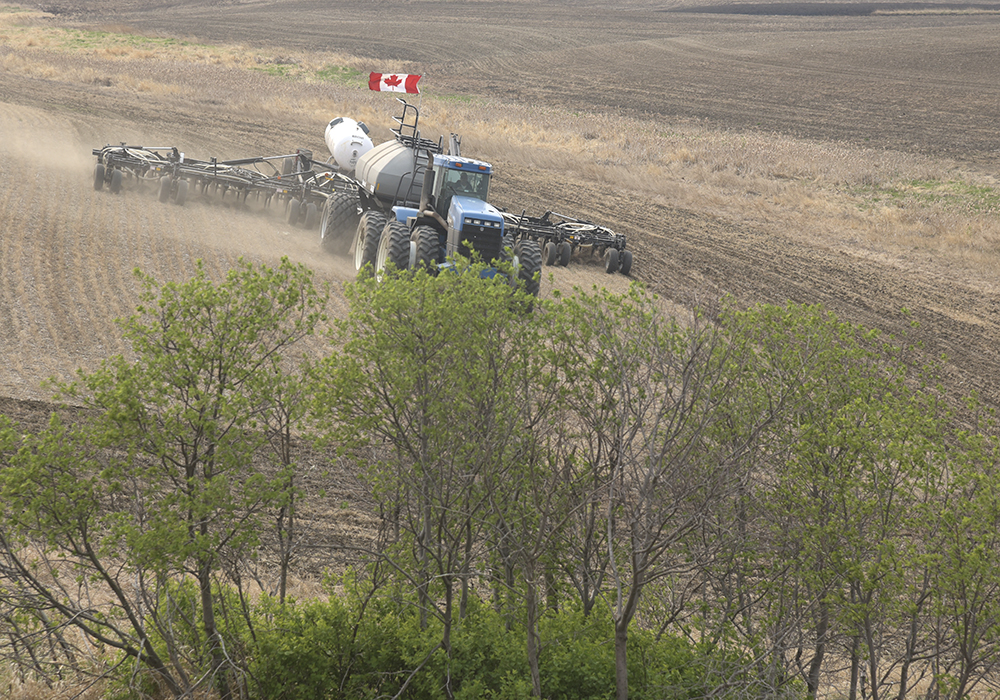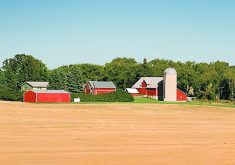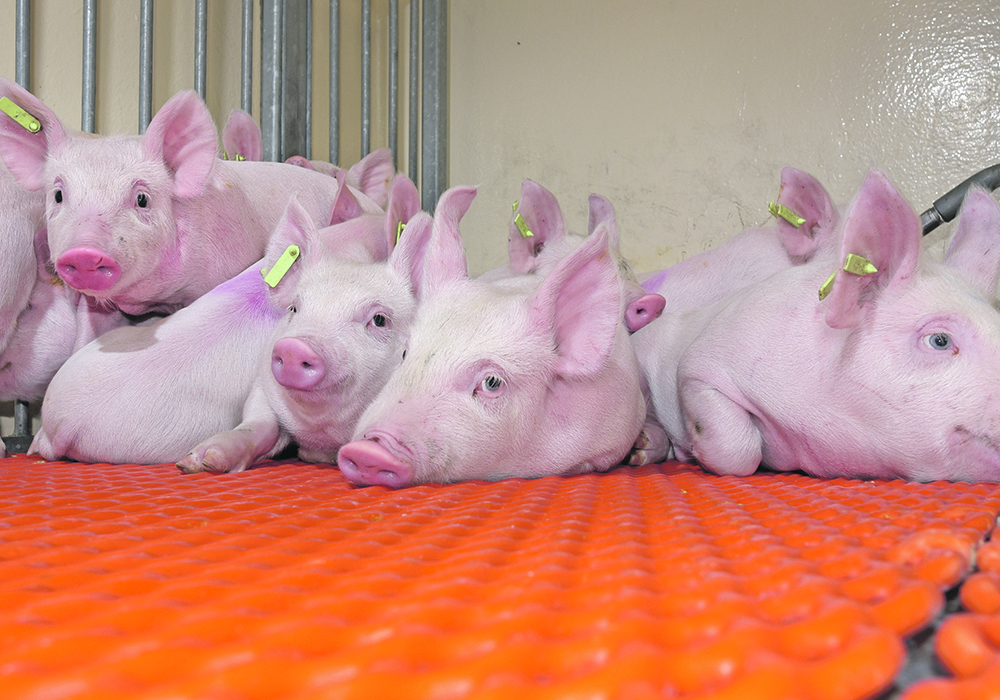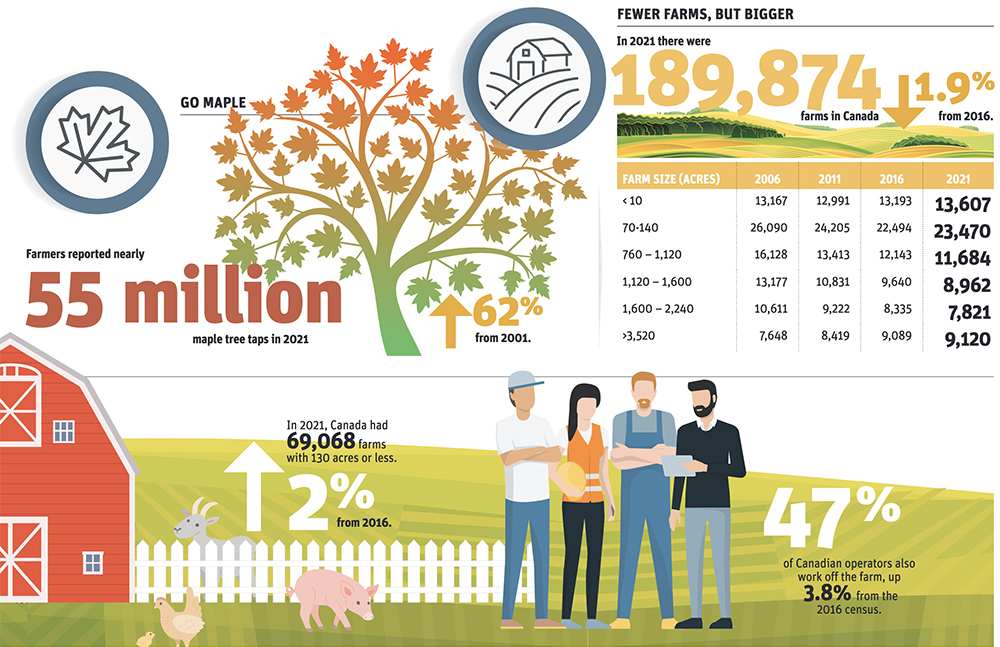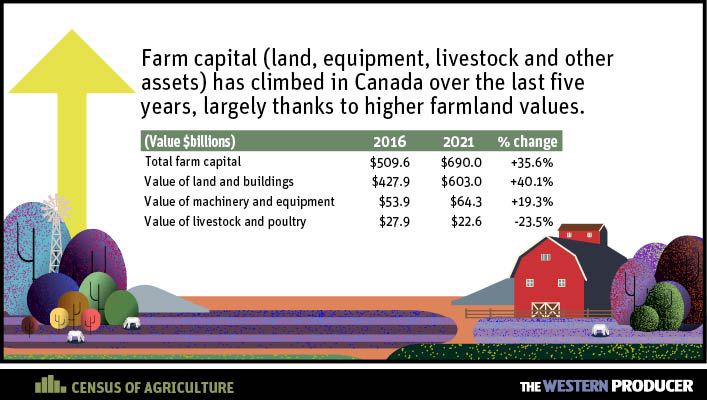UPDATED: added farm numbers graphics – 1435 CST May 11, 2022 – Data from the 2021 agriculture census shows that the trend toward farm consolidation and older operators is continuing.
Statistics Canada released the first tranche of data from last year’s census today.
The number of farms dropped 1.9 percent to 189,874. However, the definition of a farm was changed for this census, and StatsCan urged caution when comparing to previous census results.
Read Also

Trump’s tariffs take their toll on U.S. producers
U.S. farmers say Trump’s tariffs have been devastating for growers in that country.
The decline was the smallest in 25 years.
The number of farm operators dropped by 3.5 percent due to the decline in farms. There are now 262,455 compared to 272,935 in 2016.
For the first time since 1991 the number of female farmers increased, to 79,795, and female operators now account for 30.4 percent of the total.
The average age of farmers is up one year to 56, while the median age rose two years to 58. The proportion of farm operators aged 55 and older grew by six percentage points to 60.5 percent, while the number of operators under age 35 dropped from 9.1 to 8.6 percent.
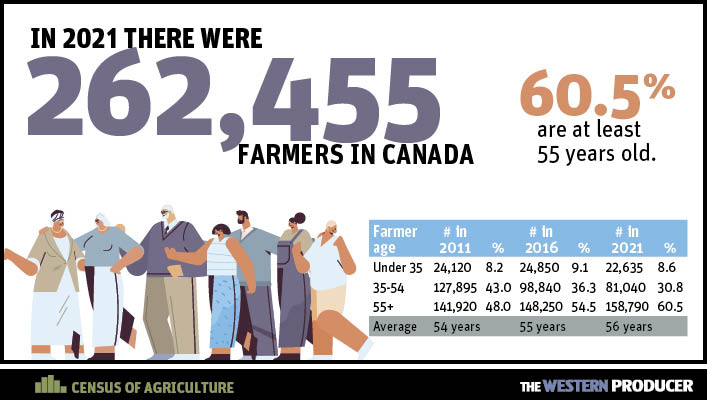
Total farm area is 153,687,771 acres, down 3.2 percent. Land in crops is up just slightly, 0.2 percent to 93,595,208, and the grains and oilseeds sector represents the largest percentage of farms at 34.3 percent, or 63,135.
Beef farms and feedlots represent 20.9 percent of farms.
Crops and beef operations account for 82.7 percent of the total farm area, or 127.1 million acres.
The census also found there are more niche sectors, as represented by the increasing number of greenhouse operations.
There are more farms with higher sales. Those with sales greater than $1 million rose to 9.9 percent of farms, up from 7.2 percent in the last census. Farms reporting at least $2 million in sales account for 51.5 percent of total farm operating revenue, up from 41.5 percent.
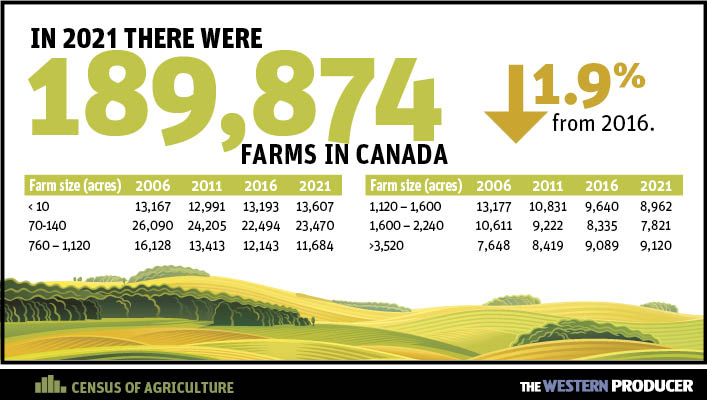
“Over time, farms have been evolving to become increasingly sophisticated businesses that harmonize automation, modernization and production operations. As a result, many farms have consolidated and become increasingly larger both in terms of sales and number of employees. Conversely, smaller and mid-sized farms are declining in Canada, thereby impacting the rural landscape and profile of Canadian region,” said a census summary.
More to come.
Contact karen.briere@producer.com


